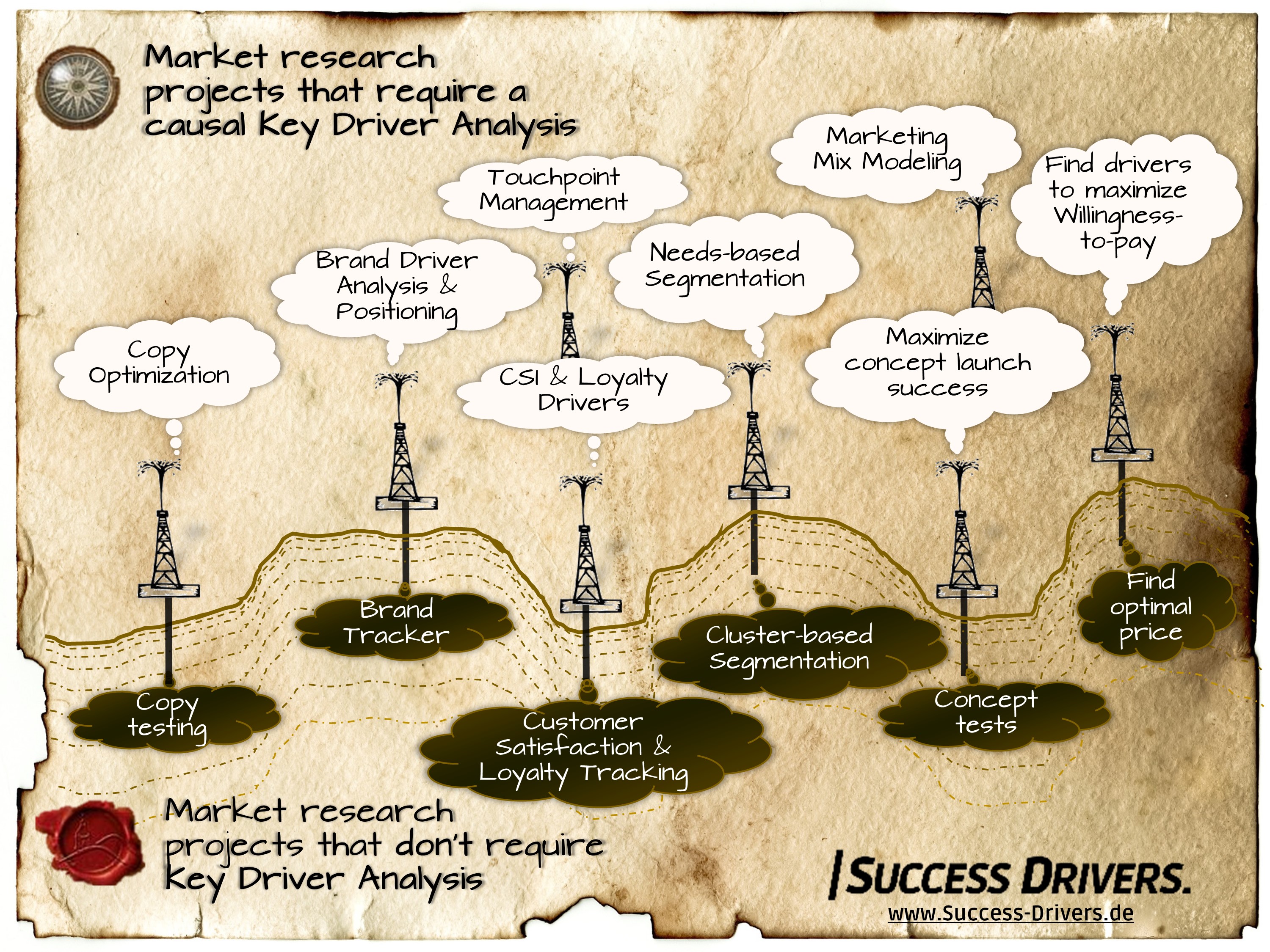
Today, driver analyses are only used in a few application areas; however, they possess a much broader application potential. Let us shed light on where their use makes sense.
At the beginning, you should write down what your research goals are. Is your goal to gather facts or to just be able to picture the customer better? How much of the market share do we have? What does the customer think about us? How satisfied are the customers? How well will the new advertisement be remembered? In all of these cases, you don’t need a key driver analysis!
Often however, behind the search for facts, there is one fundamental question: What can I do to increase revenue, to make customers more satisfied or to make an advertisement more effective? Always then, when you would like to know which factors influence your goal, this is then no longer directly visible in the data. That is when you have to use driver analyses.
Apply driver analyses for all questions about causes and searches for most effective measures.
In a copy test, for example, you can measure the advertisement recall and ask the respondents what they thought of the ad. However, consumers are not in the position to honestly be able to explain the causes for their desires and actions, nor are they always willing to. No one will say to you, “Since the brand logo wasn’t faded in at the end, I can’t remember much about the advertisement.”
Driver analyses offer the solution. After a randomised commercial break, brand images and consumer acceptance is determined in a survey. Based on the data, the driver analysis can determine which effect an advertisement had on e.g. the brand image and consumer acceptance.
Without the right data, key driver analyses are only half as effective
With driver analyses, you learn what the advertisement triggers, changes and influences. With the right question items, precise indicators for improving the advertisement can be determined.
You are perhaps asking yourself, why e.g. respondents can’t simply just be compared: For example, the consumer acceptance of those who saw the ad vs. those who haven’t seen it. The answer is simple. They are not the same people. Both samples are always different.
The control group can include, for example, many people that already know and love the product. Their answers on consumer acceptance will turn out to be significantly different. The driver analysis tabulates all other influences (like, for example, if someone is already a customer) and can then determine the true effect.
Every second market research project should use key driver analyses
If you go through the lists of the usual market research projects, you will notice that in almost all of them, the questions “why” and “what’s to do” arise. Be it copy tests, concept tests, customer satisfaction and loyalty studies, brand tracking, positioning and segmentation studies.
p.s. More on NEUSREL and Universal Structural Modeling here.
